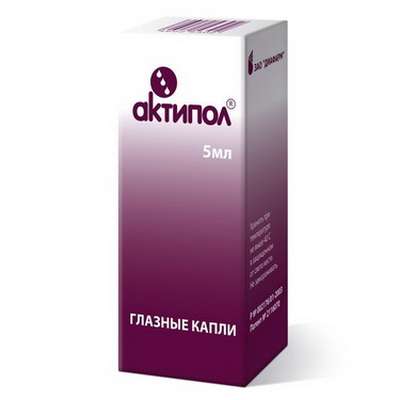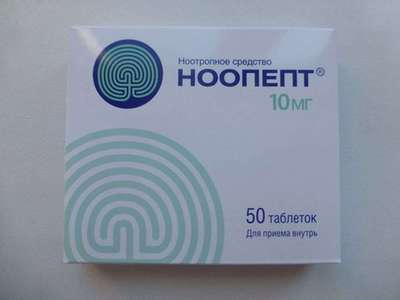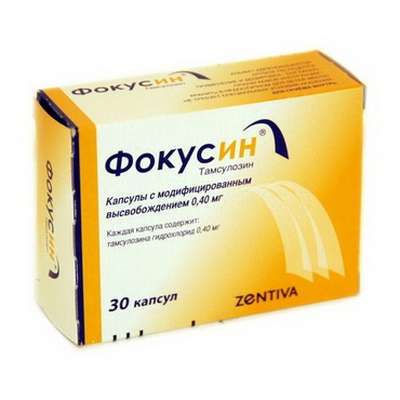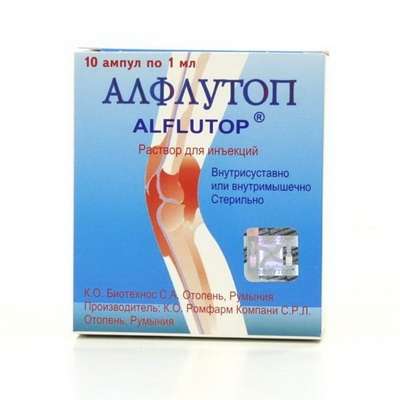Instruction for use: Solifenacin + Tamsulosin (Solifenacinum + Tamsulosinum)
I want this, give me price
Pharmacological group
M Cholinolytics in combinations
Alpha-blockers in combination
Nosological classification (ICD-10)
N31.1 Reflex neuropathic bladder, not elsewhere classified
hyperreflexia, Overactive Bladder, detrusor hyperreflexia, detrusor hyperreflexia
N31.2 neurogenic bladder weakness, not elsewhere classified
Urinary incontinence in a stressful situation, Atony of bladder, Atony of the bladder (the sphincter) (neurogenic), Impaired function of the sphincter of the bladder, Neurogenic bladder disorders, Neurogenic bladder disorder, Neurogenic bladder, Functional insufficiency of the sphincter of the bladder, Imperative incontinence
N39.3 Involuntary urination
Urinary incontinence in women, Anishuriya, Urinary incontinence
N40 Prostatic hyperplasia
Prostate adenoma, BPH, Hypertrophy of the prostate, Hypertrophy of the prostate, Dysuric disorders due to benign prostatic hyperplasia, Dysuria with prostatic adenoma, Benign prostatic hyperplasia, Benign prostatic hyperplasia of stage 1 and 2, Benign prostatic hyperplasia of the first degree, Benign prostatic hyperplasia of II degree, Benign prostatic hypertrophy, Disease of the prostate, Acute urinary retention associated with benign prostatic hyperplasia, Benign prostatic hyperplasia 1 and 2 stages in combination with prostatitis, The paradoxical ishuria
Characteristics
Combined drugs for the treatment of BPH symptoms.
Pharmacology
Pharmacological action - Anticholinergic, alfa-adrenoblocker..
Pharmacodynamics
Mechanism of action. Combined drug, containing two active substances - solifenacin and tamsulosin. These active substances have independent and complementary mechanisms of action in the treatment of lower urinary tract symptoms associated with BPH, with symptoms of filling.
Solifenacin is a selective competitive inhibitor of muscarinic receptors of the bladder, predominantly of the m3 subtype, has a low affinity or lack of affinity for other receptors, enzymes, and ion channels.
Tamsulosin is an alpha1-adrenoblocker. It is a selective competitive blocker of postsynaptic alpha 1-adrenergic receptors, especially alpha1A and alpha1D subtypes, responsible for relaxing the smooth muscles of the lower urinary tract.
Pharmacodynamic effects. Solifenacin alleviates symptoms of bladder filling (irritative symptoms) associated with the action of acetylcholine, which activates m3-cholinergic receptors in the bladder. Acetylcholine activates the contractile function of the wall of the bladder, which manifests itself in the form of urgent urge to urinate or urinate incontinence.
Tamsulosin facilitates symptoms of emptying (obstructive symptoms) by relaxing the smooth muscles of the prostate gland, the neck of the bladder and the prostatic part of the urethra. Also reduces filling symptoms.
Clinical efficacy and safety. The efficacy of solifenacin + tamsulosin combination has been demonstrated in a Phase III clinical trial in patients with lower urinary tract symptoms in patients with BPH. With this combination, there was a statistically significant decrease in symptoms on the scale of assessment of urgent urges and frequency of urination, as well as the overall frequency of urination, the average urine volume allocated for one urination, and the subscale score of the International prostate symptom score (IPSS) compared with tamsulosin In the form of controlled release. These improvements are accompanied by a significant increase in the quality of life on the scale of IPSS and the quality of life indicator on the questionnaire assessing the severity of symptoms of bladder hyperactivity. In addition, the combination of solifenacin + tamsulosin was not inferior to tamsulosin in the form of controlled release in reducing symptoms when assessing the total score on the IPSS scale (p <0.001).
Pharmacokinetics
A bioavailability study with multiple admission showed that pharmacokinetics when taking a combination of solifenacin + tamsulosin is comparable to pharmacokinetics while concomitantly taking solifenacin and tamsulosin in controlled release form in a similar dosage.
Absorption. After repeated use of solifenacin + tamsulosin combination, the Tmax value of solifenacin varied between 4.27 and 4.76 hours in different studies, tamsulosin between 3.47 and 5.65 h, respectively. Cmax solifenacin varied between 26.5 and 32 ng / ml, tamsulosin between 6.56 and 13.3 ng / ml. AUC solifenacin varied between 528 and 601 ng ∑ h / ml, tamsulosin was between 97.1 and 222 ng ∑ h / ml. Absolute bioavailability for solifenacin was about 90%, while tamsulosin was absorbed by 70-79%.
Excretion. After a single dose of solifenacin + tamsulosin T1 / 2 solifenacin varies from 49.5 to 53.0 h, tamsulosin from 12.8 to 14.0 h.
Additionally for the combination of solifenacin and tamsulosin:
Solifenacin
Absorption. Cmax is achieved after 3-8 hours. Tmax is dose independent. Cmax and AUC increase in proportion to increasing the dose from 5 to 40 mg. Absolute bioavailability is 90%.
Distribution. Vd solifenacin after intravenous administration is approximately 600 liters. Solifenacin is largely (about 98%) bound to plasma proteins, predominantly with an alpha1-acid glycoprotein.
Metabolism. Solifenacin is actively metabolized by the liver, predominantly the CYP3A4 isoenzyme of the cytochrome P450 system. However, there are alternative metabolic pathways through which solifenacin metabolism can be realized. Systemic clearance of solifenacin is about 9.5 l / h, and the final T1 / 2 is 45-68 hours. After ingestion in the plasma, in addition to solifenacin, the following metabolites were identified: one pharmacologically active (4R-hydroxysolifenacin) and three inactive (N-glucuronide, N-oxide and 4R-hydroxy-N-solifenacin).
Excretion. 26 days after a single administration of 10 mg of 14C-labeled solifenacin, about 70% of the radioactivity was detected in urine and 23% in feces. In urine, about 11% of the radioactivity was detected as an unchanged active substance, about 18% as an N-oxide metabolite, 9% as a 4R-hydroxy-N-oxide metabolite, and 8% as 4R-hydroxymetabolite (active metabolite) .
Tamsulosin
Absorption. For tamsulosin in the form of controlled release, absorption is estimated at 57% of the administered dose. Tamsulosin is characterized by linear pharmacokinetics. Css tamsulosin in plasma reaches a peak after 4-6 h.
Distribution. The connection with plasma proteins is about 99%, Vd is small (about 0.2 l / kg).
Metabolism. Tamsulosin is slowly metabolized in the liver with the formation of less active metabolites. Most of the tamsulosin is present in the blood plasma unchanged. Tamsulosin is mainly metabolized in the liver, mainly with the participation of CYP3A4 and CYP2D6 isoenzymes.
Excretion. After 1 week after a single dose of 0.2 mg of 14C-labeled tamsulosin, about 76% of the radioactivity was detected in urine and 21% in feces. In urine, about 9% of the radioactivity was detected as an unchanged active substance; About 16% in the form of sulfate of o-deethylated tamsulosin and 8% in the form of o-ethoxyphenoxyacetic acid.
Peculiarities of pharmacokinetics in certain categories of patients
Aged people. In studies of clinical pharmacology and bioavailability, the age of patients ranged from 19 to 79 years. After the use of solifenacin + tamsulosin combination, the highest concentrations were found in elderly patients, although there was almost complete overlap with individual indicators of younger patients. The combination of solifenacin + tamsulosin can be used in elderly patients.
Renal insufficiency. The pharmacokinetics of solifenacin + tamsulosin combination has not been studied in patients with renal insufficiency. The following data reflects the information available for each component of the combination relative to patients with renal insufficiency.
- Solifenacin. AUC and Cmax solifenacin in patients with mild and moderate renal insufficiency are slightly different from those in healthy volunteers. In patients with severe renal insufficiency (Cl creatinine <30 ml / min), solifenacin exposure is significantly higher - an increase in Cmax is about 30%, AUC is more than 100% and T1 / 2 is more than 60%. There was a statistically significant relationship between creatinine clearance and solifenacin clearance. The pharmacokinetics in patients undergoing hemodialysis have not been studied.
- Tamsulosin. A comparison of the pharmacokinetics of tamsulosin was performed in 6 patients with mild and moderate form (Cl creatinine greater than or equal to 30 but <70 mL / min / 1.73 m2) or moderately severe (creatinine Cl less than or equal to 30 mL / min / 1.732) Renal failure and in 6 healthy patients (Cl creatinine is greater than or equal to 90 mL / min / 1.73 m2). While there was a change in the total concentration of tamsulosin in the blood plasma as a result of a change in the bond with the alpha1-acid glycoprotein, the active concentration of tamsulosin hydrochloride, as well as its own clearance, remained relatively stable. The pharmacokinetics of tamsulosin in patients with end-stage renal failure (Cl creatinine <10 mL / min / 1.73 m2) has not been studied.
Liver failure. The pharmacokinetics of solifenacin + tamsulosin combination has not been studied in patients with hepatic insufficiency. The following data reflects the information available for each component of the combination in patients with hepatic insufficiency.
- Solifenacin. In patients with moderate hepatic insufficiency (7-9 points on the Child-Pugh scale), the value of Cmax does not change, AUC increases by 60%, T1 / 2 increases by half. Pharmacokinetics in patients with severe hepatic insufficiency was not determined.
- Tamsulosin. A comparison of the pharmacokinetics of tamsulosin was performed in 8 patients with moderate hepatic insufficiency (7-9 on the Child-Pugh scale) and in 8 healthy patients. While there was a change in the total concentration of tamsulosin in the blood plasma as a result of a change in the association with the alpha1-acid glycoprotein, the active concentration of tamsulosin hydrochloride did not change significantly, and the intrinsic clearance of the inactive taculosin moderately changed (32%). The pharmacokinetics of tamsulosin in patients with severe hepatic insufficiency have not been studied.
Indications
Treatment of symptoms of filling (irritative symptoms), moderate to severe (urge urgently to urinate, frequent urination), and symptoms of emptying (obstructive symptoms) associated with benign prostatic hyperplasia.
Contraindications
Hypersensitivity to solifenacin or tamsulosin, hemodialysis, severe hepatic insufficiency, severe renal failure or moderate hepatic insufficiency, while treatment with strong inhibitors of the isoenzyme CYP3A4 (eg ketoconazole), severe gastrointestinal diseases (including toxic megacolon), myasthenia gravis, ocular-angle glaucoma, orthostatic Hypotension, children under 18 years of age (lack of data on efficacy and safety).
Restrictions on the use
Severe renal insufficiency, the risk of delayed urination, gastrointestinal obstructive diseases, the risk of decreased motility of the gastrointestinal tract, hernia of the esophageal opening of the diaphragm, gastroesophageal reflux, concurrent administration of drugs (for example bisphosphonates) that can cause or exacerbate esophagitis, autonomic neuropathy, the presence of such risk factors, As a syndrome of prolongation of the QT interval and hypokalemia, the previous prolongation of the QT interval and tachycardia of the "pirouette" type.
In some patients receiving solifenacin, an anaphylactic reaction was noted. With the development of anaphylactic reactions, treatment with a combination of solifenacin + tamsulosin should be discontinued and appropriate treatment is necessary.
As with the use of other alpha1-blockers, tamsulosin treatment may, in some cases, have a decrease in blood pressure, which in rare cases can lead to a fainting condition. At the first signs of orthostatic hypotension (dizziness, weakness), the patient must sit or lie down and remain in this position until the signs disappear.
Some patients who took or previously took tamsulosin hydrochloride during surgery for cataract and glaucoma noted the development of intraoperative irrosis syndrome (narrow pupil syndrome), which can lead to complications during surgery or in the postoperative period. It is not recommended to start therapy with a combination of solifenacin + tamsulosin in patients who are scheduled for surgery for cataracts or glaucoma. The feasibility of canceling therapy with a combination of solifenacin + tamsulosin for 1-2 weeks before surgery for cataracts or glaucoma has not been proven to date. During the preoperative examination of the patients, the surgeon and the ophthalmologist must consider whether the patient is taking or taking a combination of solifenacin + tamsulosin. This is necessary to prepare for the possibility of developing during the operation of intraoperative irrosis of the eye.
The combination of solifenacin + tamsulosin should be used with caution in combination with strong and moderate inhibitors of CYP3A4, (eg verapamil, ketoconazole, ritonavir, nelfinavir, itraconazole). The combination of solifenacin + tamsulosin should not be used in patients with a metabolic disorder of the CYP2D6 isoenzyme in combination with strong inhibitors of CYP3A4 or strong inhibitors of CYP2D6 (eg paroxetine).
Renal insufficiency. The combination of solifenacin + tamsulosin can be used in patients with mild to moderate renal failure, but with caution should be used in patients with severe renal failure.
Liver failure. The combination of solifenacin + tamsulosin can be used in patients with mild hepatic insufficiency (less than or equal to 7 on the Child-Pugh scale). In patients with moderate hepatic insufficiency (7-9 points on the Child-Pugh scale), a combination of solifenacin + tamsulosin should be used with caution. In patients with severe hepatic insufficiency (> 9 on the Child-Pugh scale), the combination of solifenacin + tamsulosin is contraindicated.
pregnancy and lactation
The combination of solifenacin + tamsulosin is intended for use only in males.
The effect of combination solifenacin + tamsulosin on reproductive function has not been studied. Studies in animals showed no direct adverse effects of solifenacin or tamsulosin on fertility or embryo / fetal development.
Side effects
The combination of solifenacin + tamsulosin can cause side effects associated with the m-holin-blocking effect of solifenacin, often of mild or moderate severity. Most often, clinical trials using this combination reported side effects such as dry mouth (9.5%), constipation (3.2%) and dyspepsia (including abdominal pains - 2.4%). Other common adverse reactions include dizziness (1.4%), blurred vision (1.2%), fatigue (1.2%) and ejaculatory disorders (including retrograde ejaculation - 1.5%). Acute urinary retention (0.3%, rarely) is the most serious side effect observed during treatment with a combination of silyphenacin + tamsulosin in clinical trials.
Below are the data on the incidence of adverse reactions associated with the combination of solifenacin + tamsulosin, recorded during clinical trials, and separately for solifenacin (5 and 10 mg) and tamsulosin (0.4 mg), which are taken from the medical instructions for the relevant Drugs and can occur when taking a combination of solifenacin + tamsulosin.
The frequency of adverse reactions is determined as follows: very often (more than or equal to 1/10); Often (more than or equal to 1/100 to <1/10); Infrequently (more than or equal to 1/1000 to <1/100); Rarely (more than or equal to 1/10000 to <1/1000); Very rarely (<1 / 10,000); Unknown (can not be estimated based on available data).
Combination solifenacin + tamsulosin
From the nervous system: often - dizziness.
From the side of the organ of vision: often - blurred vision.
From the gastrointestinal tract: often - dry mouth, indigestion, constipation.
From the skin and subcutaneous tissue: infrequently - itching.
From the side of the kidneys and urinary tract: unknown - delay urination.
From the side of the reproductive system: often - violations of ejaculation.
Disorders of general condition: often - fatigue.
Solifenacin
Infections and invasions: infrequently - urinary tract infections, cystitis.
From the side of the immune system: unknown * - anaphylactic reactions.
From the side of metabolism and nutrition: Unknown * - decreased appetite, hyperkalemia.
Mental disorders: very rarely * - hallucinations, psychosis; Unknown * - delirium.
From the nervous system: rarely * - dizziness, headache; Infrequently - drowsiness, dysgeusia.
From the side of the organ of vision: often - blurred vision; Infrequent - dry eyes; Unknown * - glaucoma.
On the part of the CCC: unknown * - tachycardia of the "pirouette" type, prolongation of the QT interval on the ECG.
From the respiratory, thorax and mediastinal organs: infrequently dry in the nose; Unknown * - dysphonia.
From the digestive tract: very often - dry mouth; Often - indigestion, constipation, nausea, abdominal pain; Infrequently - GERD, dryness in the throat; Rarely vomiting *, colonic obstruction, coprostasis; Unknown * - intestinal obstruction, discomfort in the abdomen.
Hepatobiliary disorders: unknown * - impaired liver function, increased activity of hepatic enzymes.
From the skin and subcutaneous tissue: infrequent - dry skin; Rarely * - itching, rash; Very rarely * - allergic rash, Quincke's edema, erythema multiforme.
From the musculoskeletal system: unknown * - muscle weakness.
From the side of the kidneys and urinary tract: infrequent - difficulty urinating; Rarely - urinary retention; Unknown * - renal failure.
Disorders of general condition: infrequent - fatigue, peripheral edema.
Tamsulosin
From the nervous system: often - dizziness; Infrequently - a headache; Rarely - faint.
From the side of the organ of vision: unknown * - intraoperative instability of the iris.
From the CCC: infrequent - a feeling of palpitations, orthostatic hypotension; Unknown * - atrial fibrillation, arrhythmia, tachycardia.
On the part of the respiratory, thorax and mediastinal organs: infrequently, rhinitis; Unknown * - shortness of breath.
From the digestive tract: infrequent - constipation, nausea, diarrhea, vomiting.
From the skin and subcutaneous tissue: infrequently - itching, rash, allergic rash; Rarely - Quincke's edema; Very rarely - Stevens-Johnson syndrome.
On the part of the reproductive system: often - violations of ejaculation; Very rarely - priapism.
Disorders of general condition: infrequently, asthenia.
* Side effects were observed after registration of the drug. Due to the fact that the data were obtained by spontaneous communication during the post-registration period, it is difficult to determine the frequency and cause-and-effect relationship with taking tamsulosin and solifenacin.
Long-term safety data for combination solifenacin + tamsulosin
The types and frequency of adverse reactions that were observed during 1-year treatment with a combination of solifenacin + tamsulosin coincided with those observed during the 12-week study. The combination is well tolerated, and there were no specific undesirable reactions associated with its long-term administration.
Interaction
Interaction with inhibitors of CYP3A4 and CYP2D6
The simultaneous use of solifenacin and ketoconazole (200 mg per day), a potent inhibitor of the CYP3A4 isoenzyme, caused a double increase in solubhenacin AUC, and a three-fold increase in the dose of 400 mg per day.
The simultaneous use of tamsulosin with ketoconazole at a dosage of 400 mg per day leads to an increase in Cmax and AUC of tamsulosin by 2.2 and 2.8 times, respectively.
Simultaneous reception of a combination solifenacin + tamsulosin with verapamil (moderate inhibitor CYP3A4) leads to an increase in Cmax and AUC of tamsulosin by 2.2 times and solifenacin by approximately 1.6 times.
Simultaneous administration of tamsulosin with a strong inhibitor of CYP2D6 paroxetine (20 mg per day) leads to an increase of Cmax and AUC of tamsulosin by 1.3 and 1.6 times, respectively.
Since solifenacin and tamsulosin are metabolized by the CYP3A4 isoenzyme, pharmacokinetic interactions with CYP3A4 isoenzyme inducers (eg rifampicin) are possible.
Other interactions
Solifenacin:
- can reduce the effect of drugs that stimulate the motility of the gastrointestinal tract (eg metoclopramide, cisapride);
- In vitro studies have shown that in therapeutic concentrations, solifenacin does not inhibit the isoenzymes CYP1A1 / 2, 2B6, 2C8, 2C9, 2C19, 2D6, 2E1 or 3A4. Therefore, it is unlikely that solifenacin will change the clearance of drugs metabolized by these isoenzymes;
- taking solifenacin does not cause changes in the pharmacokinetics of R- or S-warfarin or their effect on PV;
- taking solifenacin does not affect the pharmacokinetics of digoxin.
Tamsulosin:
- concomitant administration of other alpha1-adrenergic blockers may lead to an antihypertensive effect;
- diazepam, propranolol, trichloromethiazide, chloromadinone, amitriptyline, diclofenac, glibenclamide, simvastatin and warfarin do not change the free tamsulosin fraction in human plasma in vitro. In turn, tamsulosin also does not change the free fractions of diazepam, propranolol, trichloromethiazide and chloromadinone. Diclofenac and warfarin can increase the rate of excretion of tamsulosin;
- with simultaneous application with furosemide, there was a slight decrease in concentration, but this does not require a dose change, since the concentration of drugs remains within the normal range;
- In vitro studies have shown that in therapeutic concentrations, tamsulosin does not inhibit the isoenzymes CYP1A1 / 2, 2C9, 2C19, 2D6, 2E1 or 3A4. Therefore, it is unlikely that tamsulosin will change the clearance of drugs metabolized by these isoenzymes;
- with the appointment of tamsulosin, together with atenolol, enalapril or theophylline, no interaction was found.
Overdose
Symptoms. An overdose of a combination of solifenacin and tamsulosin can be accompanied by severe m-holinoblokiruyuschimi violations along with acute hypotension. The highest dose, which was taken accidentally in a clinical trial, was 126 mg of solifenacin and 5.6 mg of tamsulosin. This dose was well tolerated, there was a single undesirable phenomenon - dry mouth of a mild degree for 16 days.
Treatment. In cases of overdose, it is necessary to prescribe activated charcoal, wash the stomach, but do not induce vomiting. As in cases of overdose of other m-holinoblokatorov, the symptoms should be treated as follows:
- with severe m-cholinoblocking effects of central origin (hallucinations, pronounced excitability) - physostigmine or activated charcoal;
- with convulsions or severe excitability - benzodiazepines;
- with respiratory failure - artificial respiration;
- with tachycardia - symptomatic treatment as needed. Beta-blockers should be used with caution, as a simultaneous overdose with tamsulosin can potentially lead to severe hypotension;
- with acute urinary retention - catheterization.
As in the case of an overdose of other m-holinoblokatorov, special attention should be paid to patients with an established risk of prolonging the QT interval (ie, hypokalemia, bradycardia and simultaneous administration of drugs that elongate the QT interval) and patients with heart disease (myocardial ischemia, arrhythmia , CHF).
Acute hypotension, which can occur after an overdose of tamsulosin, should be treated symptomatically. It is unlikely that dialysis will be effective. Tamsulosin binds intensely to plasma proteins.
Routes of administration
Inside.
Precautions
Influence on the ability to drive vehicles and mechanisms. Studies of the effects of combination solifenacin + tamsulosin on the ability to drive vehicles and engage in potentially hazardous activities have not been conducted. However, the patient should be informed of the possible occurrence of dizziness, blurred vision, fatigue and, less often, drowsiness, which can adversely affect the ability to drive and work with machinery.

 Cart
Cart





